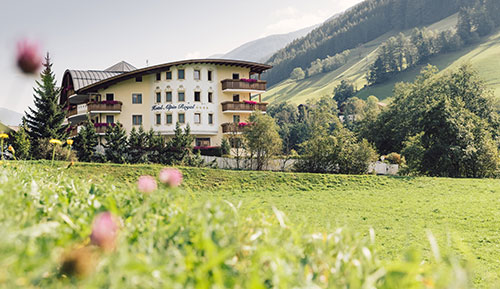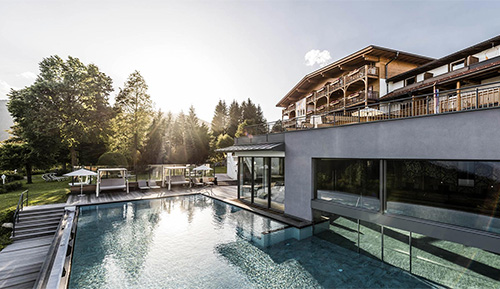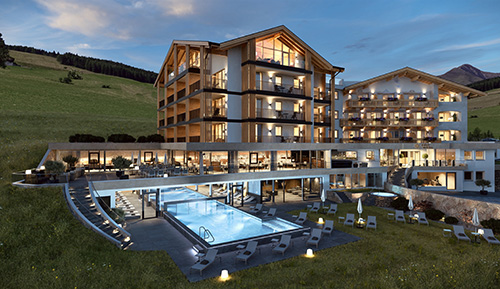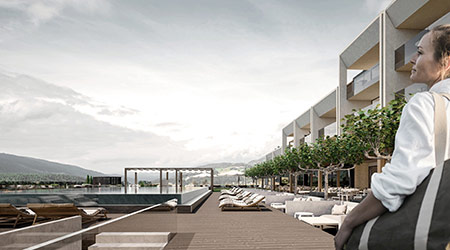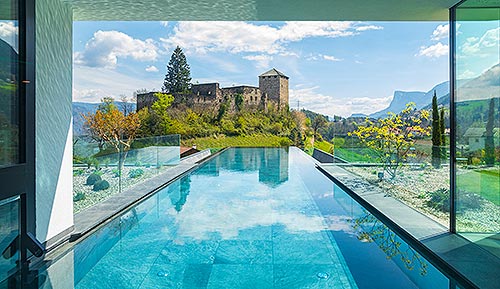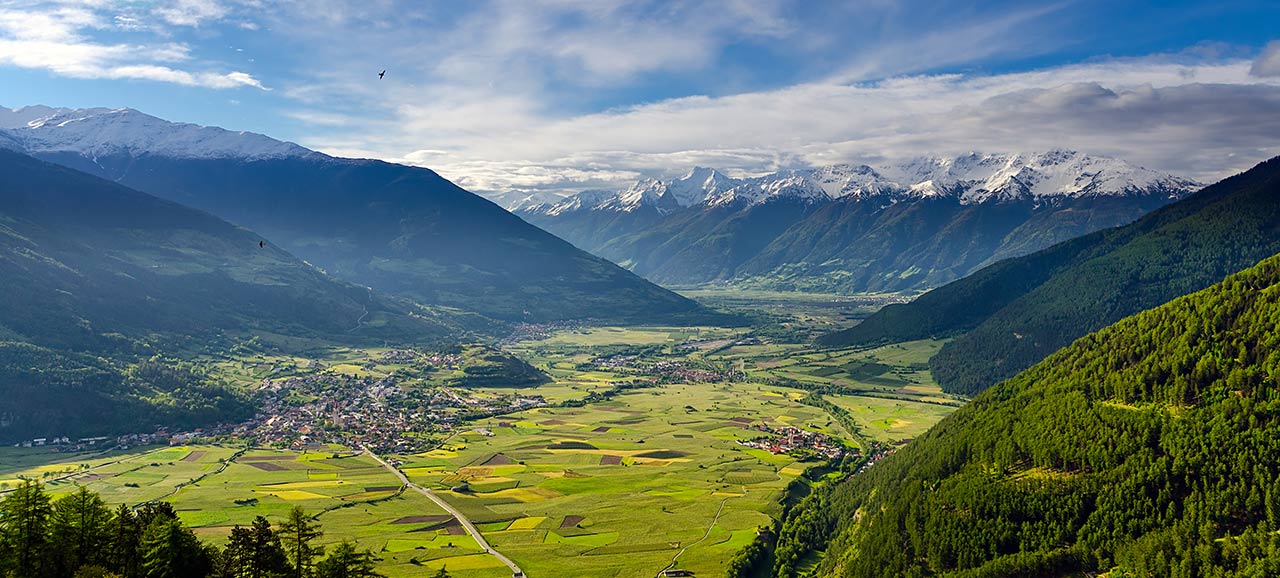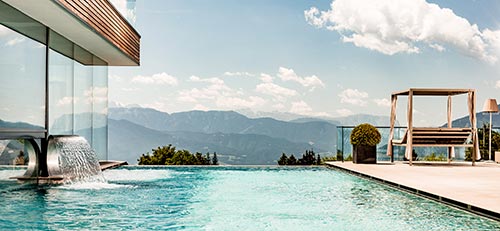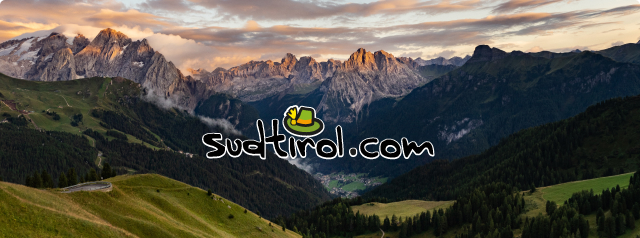The Venosta valley - a treasure house of history, art and nature
Venosta valley is the largest and sunniest valley in South Tyrol, which extends from the Swiss border (the canton of Grigioni) up to the neighbouring town of Merano. The area is surrounded by impressive peaks, such as those of the Gruppo dell' Ortles-Cevedale and the Alpi Venoste. These act almost as a barrier in the north and in the south, since they hold back the rain clouds. In the past the aridity in Venosta valley especially as regards the irrigation of the fields caused problems. The snow and glacier melt-water was therefore brought into the valley in irrigation channels. However, there were numerous disputes as the inhabitants protested that the authorities were distributing the water unfairly. For this reason an "irrigator" or water controller was appointed, to make sure that the water was distributed fairly. Of the 300 irrigation channels, which once existed, there remain only a dozen today. You can hike or cycle through beautiful countryside along the irrigation paths. Nowadays they are merely a tourist attraction, since they have been replaced by modern irrigation systems.

There has been human settlement in Venosta valley since the far distant past, as is attested by the discovery of Ötzi, the Iceman in the Senales Valley. The mummy, discovered by German tourists in September 1992, has been estimated to be 5,300 years old, while some of the cobblestones and objects discovered in the surrounding area are reckoned to date from the Mesolithic (8,000 B.C.). After the disputes between Austria and Italy had been settled, in which both countries claimed Ötzi, the mummy preserved in this unique fashion, to be their own, he can now be seen in the South TyroleanMuseum of Archaeology in Bolzano in Via Museo, 43.
Treasures of history and art and unspoilt natural surroundings can be found everywhere in Venosta valley, which reveals itself in all its glory in the numerous villages. Castelbello, Glorenza, Laces, Lasa, Malles, Martello, Ortles, Prato allo Stelvio, Resia, Silandro, Sluderno, Stelvio, Trafoi, Tubre in Val Monastero - these are the names of the principal villages in Venosta valley, all of them fascinating, elegant and enviably beautiful. Such as, to name but a few, the striking and unique Coira Castle in Sluderno, dating from 1259, the 12th century Abbazia di Monte Maria, surrounded by its ancient walls, in Malles, the Church of St. Benedict, also in Malles, which was constructed in around 800 during the reign of Charlemagne or the Coldrano Castle in Laces, which is assumed to date back to the 16th century. And, of course, the "white gold" from Venosta valley, the world-renowned Lasa marble, which was often used for constructing churches, museums and other buildings or for the pavements in the villages. The famous Venosta valley apples must not be forgotten, with their unmistakable trademark offering a delicious foretaste of the highest quality to anyone who likes to try at least one of the six varieties on offer.
In short, Venosta valley is a treasure house, which every year enchants more and numerous groups of visitors from all over the world. Venosta valley is easy to reach and can also be explored by public transport, which is among the most modern and innovative in the whole of South Tyrol. You only have to think of the Venosta valley railway, whose modern rail infrastructure was inaugurated as recently as 2005 and which offers visitors to the region a leisurely, almost noiseless way to explore the Venosta valley holiday region and to enjoy inimitable views.
Another glimpse of Venosta valley like this is bound to excite your curiosity and awaken the desire to discover this extraordinarily beautiful region as quickly as possible. A surprise awaits you around every corner!

